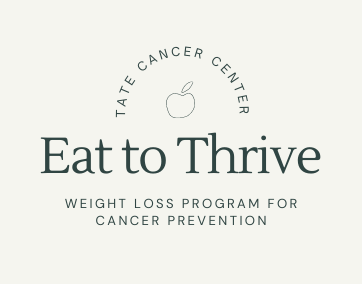Program Goals
- Educate community members on healthy eating behaviors.
- Draw attention to current barriers to healthy eating.
- Partner with other community organizations to make healthy lifestyles more accessible.
Objectives
- Enroll 10 participants in the first year.
- Have all participants attend 10 group education sessions.
- Demonstrate increase in nutrition knowledge among participants via pre- and post-tests.
- Collaborate with local fitness center for a community event to encourage healthy habits.
Logic Model
INPUTS | ACTIVITIES | OUTPUTS | S-T OUTCOMES | I-T OUTCOMES | L-T OUTCOMES |
Program educator, education supplies (PowerPoints, props, etc), curriculum, and conference room. | Provide group education sessions that include lectures and group discussions. | Participants attend 10 weekly sessions. | Participants understand healthy eating behaviors. | Participants implement healthy eating behaviors in their daily lives. | With better dietary behaviors, the community obesity rates decrease, lowering the risk of cancer. |
Program team provides training for clinicians. | Program team implements training program for clinicians to promote and/or refer individuals to program. | All cancer center providers discuss weight loss program to appropriate personnel. | More community members become aware of the program. | More community members enroll in the program and receive better nutrition education. | With greater weight loss education, the overall community obesity rates decrease, lowering risk of cancer. |
Provide education to grocery store owners. | Collaborate with local grocery stores to increase health food access for community members. | Grocery stores increase supply and decrease price of fresh produce. | More fresh produce is available in grocery stores. | Community members purchase and consume more fresh produce. | With higher consumption of fresh produce, the community’s obesity rates decrease, lowering risk of cancer. |
Program Evaluation
Complete & Acceptable Delivery
- Nutrition Education: 5 of the 10 weekly group sessions will be focused on nutrition education. The topics of discussion will be carbohydrates, proteins, fats, fruits and vegetables, and physical activity. There will be one nutrition educator, who must be properly credentialed to teach nutrition. PowerPoints and educational handouts will be heavily utilized in these 5 weeks. Participation will be measured by attendance at these sessions.
- Behavior Modification: The final 5 weeks of the education component of the program will be focused on behavior modification. Topics of discussion will include goal setting, meal preparation, cooking techniques, mindful eating strategies, and avoiding burn out. The nutrition educator will facilitate group discussions and present demonstrations as necessary. Participation will be measured by attendance at these sessions.
- Community Engagement: The program leadership will collaborate with other organizations within the community, i.e. local gyms, churches, schools, and grocery stores, to plan at least one event per year that increases community access to either healthy foods, educational training, or physical activity. Participation will be measured by total attendance at event.
|
Target of Question |
Process-Evaluation Question |
Method of Assessment |
Resources Required |
|
Recruitment |
What methods were used to recruit participants? |
Program staff documents how all participants were referred or heard about the program. |
Program staff documentation form |
|
Reach |
What proportion of participants participated in each group lesson? |
Participants will sign in when they arrive to group sessions. |
Attendance sheets |
|
Fidelity |
How effective were the health education materials provided? |
Participant questionnaires rating the effectiveness, readability, and relevancy of education materials. |
Participant questionnaire |
|
Context |
What social, cultural, or environmental factors facilitated or inhibited community engagement? |
Program staff documents all outreach to and feedback from community partners, and all meetings about community outreach are transcribed for quality analysis. |
Program staff documentation form + meeting minutes |
|
Dose Delivered |
To what extent was all of the intended content covered? |
Nutrition educator documents all parts of the curriculum that were delivered. |
Program staff documentation form |
|
Dose Received |
To what extent did participants adopt these new behaviors? |
Participants will record their habits daily and will be asked on participant questionnaire with open-ended questions included. |
Participant habit trackers + participant questionnaire |
